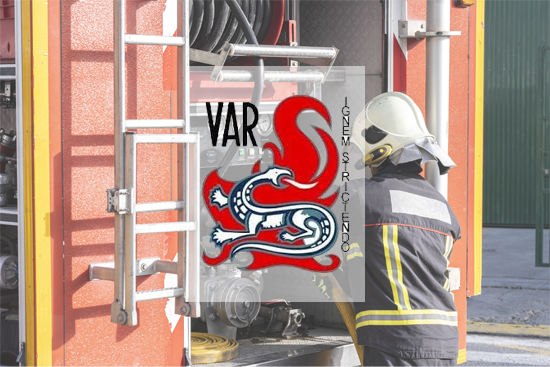
About the National Geographic Institute
The NGI's main tasks are the production, integration and distribution of geographical reference data throughout France. This data set, the Large Scale Repository (LSR), is made up of different components, compatible with each other, be overlaid and interoperable:
- ORTHO DB: photographic data (metric precision and aerial photographs)
- TOPO DB: topographical data (3D description of the land and its infrastructures)
- LAND PARCEL DB: cadastral data (identification and description of the boundaries of the land parcels)
- ADDRESS DB: Address data (location of postal addresses and street names).
This Large Scale Repository (LSR) is eagerly awaited by local communities and enterprises that need to develop their business of relying on geographic information.
Key figures
- 1,580 staff members;
- 1 registered office in France;
- 5 interregional directorates;
- 5 research laboratories;
- €153 million budget in 2018.
The challenge
Since 1994, NGI began the full computerization of the production line of geographical information, especially the TOPO DB. In this first phase, the NGI had already retained the GeoConcept GIS to accelerate the initial input of the TOPO DB made from aerial photographs and complemented by the collection on the terrain of non-visible objects (details under vegetative cover, administrative boundaries, and tourist routes).
As part of the implementation of LSR, the NGI wants to carry out the update continuously or "CU" of its databases, especially the TOPO DB to overcome the paces of updates often too long (every 5 years for aerial shots). To process the decentralized “changes", the NGI Vector Databases Department searches, for the acquisition of the geometry of these changes, field survey systems.
La solution apportée par GEOCONCEPT
The geoptimisation of geographic information
"To achieve field surveys for the continuous update (CU) that are compatible with the specifications of the LSR, NGI has chosen a solution based on the Geoconcept GIS. Each system consists of a Trimble GPS receiver, a graphics tablet and even a rangefinder. In addition to its ease of use, this system allows taking directly the work database in the field without file conversion, by having access to the geometric and semantic context of all objects."
Ms. Mallison, Analyst in CU Unit Organization
The objective of the CU is to locally and uniquely collect the changes in the field concerning road networks, railway networks, addresses and street names, places of business (administration offices, municipalities ..), buildings ... These updates, entered in local collections databases are then synchronized with the central database that feeds all databases and cartographic products derivatives (LSR ...). As part of a tender, the NGI selects the turnkey solution of GeoConcept SA to collect geographic information in the field.This solution is based on the Geoconcept GIS engine and GPS Survey module, developed with the Geosphere Company, partner of GeoConcept SA, configured to integrate land surveys and correction data. In addition, this overall comprehensive solution includes Trimble GPS receivers to record positions in the field and distance meters with angular encoder for the taking remote points, measurement of heights ... provided by the D3E Electronics company.
And for easier fieldwork, the receptors are coupled with Panasonic graphics tablets offering the collector wide screen readability, even in bright sunlight.
discover Geoconcept GIS
"The flexibility of the GeoConcept GIS ensures a digital reconstruction of the map 4 times faster than manual reconstruction. This results in increased productivity for the production of maps."
GIS for the collection of geographic information in the field
Acquisition of land data
The solution of GPS survey, Geoconcept for Pathfinder Solution (GCPS), developed on the Geoconcept GIS engine with Geosphere allows the collector to fully control the GPS Trimble material solution (configuration, start entry, pause, stop entry ...) with a single click from the Geoconcept GIS software. It then proceeds to the surveys directly from the Geoconcept application. Similarly, when creating an object, it can enter the attribute information of this object in the Geoconcept map.
Geoconcept then receives points sent by GPS and draws in real-time the objects as they are acquired. The collector thus gets in real-time the creation of objects of the map while maintaining the base GPS points of the plot. The GCPS solution includes the post-processing functions to be taken into consideration in the coordinate corrections (satellite position). The "real" objects of the maps (roads, buildings, structures ...), designed by GCPS, will, in turn, be updated according to the corrected GPS points.
In the situation of a survey, GCPS also offers the collector the features allowing managing horizontal and vertical offsets on the objects being acquired (antenna height, offset from the axis of track ...), centering the map automatically on the entered points.
Updating the "production" database with survey elements
After having carried out the GPS surveys and the desired processing (smoothing, correction ...) of the embedded database, the collector easily updates the production database. In fact, the list of updated objects obtained by a simple request of the field map then feeds the "production" map by simple drag and drop function of Geoconcept.
The main advantage is that the "base" map of the GPS survey is the same as the production station. Users thus do not have to carry out data transformation.
Acquisition of the points by laser rangefinder
To optimize the data acquisition, a rangefinder with an angle encoder is coupled to the GPS hardware. The collector has features for measuring angle and distance (taking points remotely, measurement of heights ...). It can choose between two data acquisition methods.
Discover Geoconcept GIS



